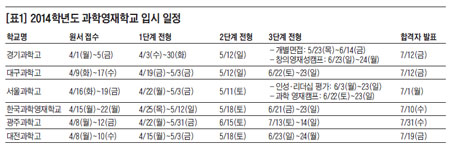A list of resources from around the Web about education as selected by researchers and editors of The New York Times.
General
- Education Department
- National Center for Education Statistics
- The Nation's Report Card, From the N.C.E.S.
- World Education Trends, O.E.C.D., 2005
News
- Education News, Daily digest of media reports.
- Education Week , Daily articles; some content by subscription only.
- Chronicle of Higher Education , Daily articles; in-depth coverage and data by subscription only.
- Almanac of Higher Education, From the Chronicle of Higher Education.
- Inside Higher Ed, News and commentary.
- Western Interstate Commission on Higher Education , Policy news, emphasizing Western states.
- Arts & Letters Daily
- College newspapers online
Policy Groups
- Center on Education Policy
- Education Trust
- Alliance for Excellent Education
- Fair Test, Opposes over-reliance on standardized testing.
- Center for Educational Freedom , Cato Institute
- Thomas B. Fordham Foundation
Special Education
- Education Department's special education office
- Council for Exceptional Children
- National Council on Disability
- National Dissemination Center for Children With Disabilities
- National Center for Learning Disabilities
- International Dyslexia Association
- Schwab Foundation for Learning
- Wrightslaw Special Education Law and Advocacy
- Center for Law and Education
- LD Online
Associations and Trade Groups
- Parent Teacher Association
- National Association of School Boards
- American Association of School Administrators
- American Council on Education , Higher education.
- Association of American Universities
- American Association of Community Colleges
Education Unions
- National Education Association
- American Federation of Teachers
- United Federation of Teachers, Represents New York City teachers.
- Coalition of Graduate Employee Unions
Philanthropies and Foundations
- Bill and Melinda Gates Foundation
- Council for Advancement and Support of Education
- Ford Foundation
- Lumina Foundation for Education
- William and Flora Hewitt Foundation
Teaching
- Teach for America
- American Association of Colleges of Teacher Education
- National Council for Accreditation of Teacher Education
- National Center for Alternative Teacher Certification
College Admissions
- AdmissionsAdvice.com, Tips, reviews, links and a blog from a college counselor.
- CollegeConfidential.com, Advice and reviews.
- College Board, Advice on finding a college, applications and financial aid.
- College Bound
- National Association for College Admissions Counseling, Student resources.
- Common college application , Used by about 300 schools.
College and graduate school rankings
- U.S. News & World Report
- Princeton Review, Based on student surveys.
- Kiplinger's Personal Finance, "Best values in education."
- Washington Monthly, Schools that promote social mobility.
- Journal of Blacks in Higher Education
- Hispanic Magazine
- John Templeton Foundation , Evaluating character development.
- Graduate school rankings
- Business Week , Business school rankings.
- Wall Street Journal, Business school rankings.
Financial aid and loans
- Federal Education Department, Portal for Information on student loans and aid.
- Online Tutorial , From Kiplinger, a financial advice magazine.
- The Government's Free Application for Federal Student Aid (FAFSA), Most students interested in financial aid for college will need to complete this.
- College Board's Aid Calculator For comparing financial aid offers.
Study Abroad
College Sports
- N.C.A.A.
- N.C.A.A. sports news
- ESPN U
- CSTV, College sports cable network.
Higher Education: Studies and Resources
- Trends in college prices and aid, From the College Board.
- State by state "report card'', From the National Center for Public Policy and Higher Education.
- College graduation rates, From the Education Trust
- The American Freshman, Annual survey by UCLA.
- The State of College Admission , Annual survey by NACA.
- Community College Research Center
- The Center for Studies in Higher Education
New York City
- Department of Education
- Independent Schools Admissions Association , Private schools admissions information.
- Inside Schools, News and school ratings.
- The After-School Corporation
Documents
- “A Nation at Risk: The Imperative for Educational Reform” , The 1983 white paper that triggered the standards movement, written by the National Commission on Excellence in Education.
- “Answers in the Tool Box: Academic Intensity, Attendance Patterns, and Bachelor's Degree Completion” A 1999 U.S. Department of Education study that describes and assesses the high school curriculum, based on a study of student transcripts.
- Racial segregation in schools and inequities in the quality of public education, Analysis from the Civil Rights Project at Harvard University.
- “Growing By Degrees: Online Education in the United States, 2005”
- “The American Freshman” Annual survey of entering freshmen at nearly 400 four-year colleges and universities.
- “A Matter of Degrees: Improving Graduation Rates in Four-Year Colleges and Universities” (2004) The Education Trust’s analysis of graduation rates at four-year colleges and universities.
- “The Expectations Gap: A 50-State Review of High School Graduation Requirements” (2004)
- “The State of College Admission” The National Association for College Admission Counseling’s annual report










